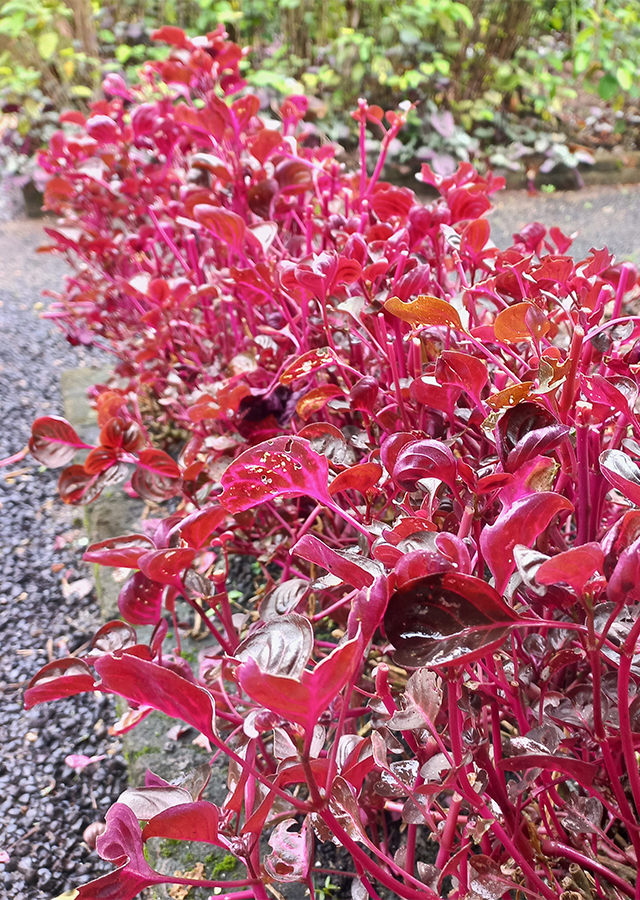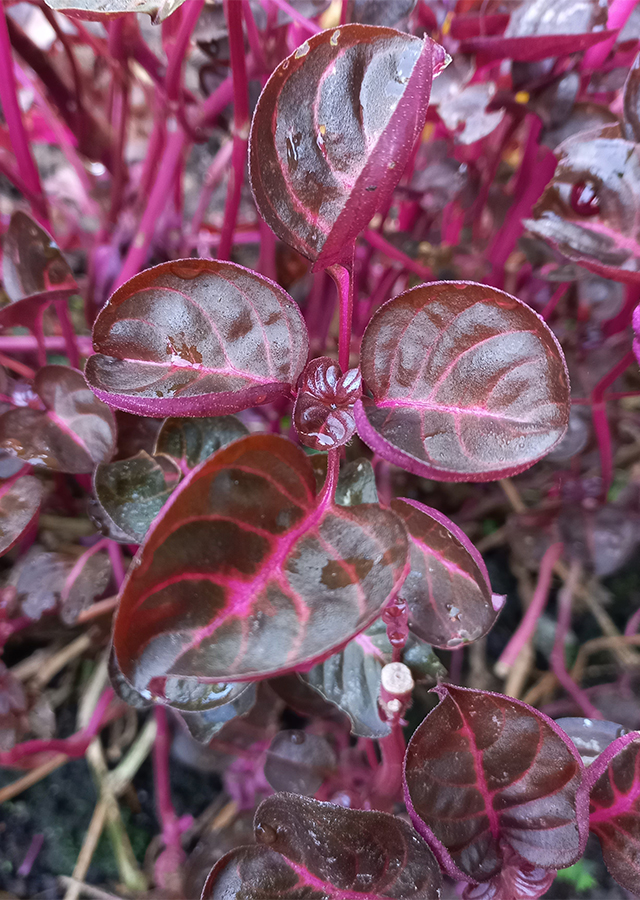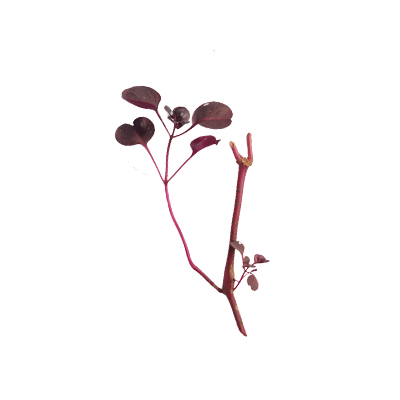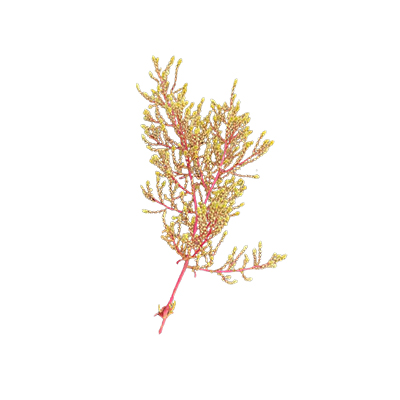Bloodleaf
Iresine diffusa f. herbstii (Hook.) Pedersen
Amaranthaceae
Location in our garden
Principal



Synonym
Iresine herbstii Hook
Iresine verschaffeltii (Lem.) Van Houtte
Achyranthes herbsii (Hook.) Hovey
Habitus
Herbaceous. Herbaceous perennial plant growing up to 1.5 metres tall.
Part Used
Leaves
Flowers
Stem
Growing Requirements
Full Sunshine
Need Shade
Habitat
Terrestrial
Overview
The plant is native to Peru, and introduced to regions of Latin America, India, Africa, China, South-East Asia, Solomon Island, and Windward Island. Bloodleaf often cultivated as an ornamental in the tropics, valued especially for the attractive leaf markings. The leaves are used locally as a food colouring. They are squeezed in water in order to obtain a red dye used for colouring agar-agar jellies. In the northern Peruvian Andes, used for magic-therapeutical purposes where traditional healers use it to expel evil spirits from the body.
Vernacular Names
Dahong pula (Tagalog-Philippines), Xue xian (Chinese).
Agroecology
Found in forest borders and along forest paths, at elevations from 500-1,500 metres. Prefers a minimum temperature in the range 10-15 °C, the plants are damaged by temperatures lower than 2 °C. Succeeds in full sun or light shade.Grows best in a humus-rich, moist, well-drained soil.
Morphology
- Roots - taproot.
- Stem - red coloured stems.
- Leaves - broadly ovate or orbicular, purple-reddish leaves with light purple midrib and veins.
- Flowers - small, petals are greenish white or yellowish-white, with dry membranous bracts.
Cultivation
Propagated by seed and stem cuttings.
Chemical Constituents
Alkaloids, flavonoids, glycosides, phenols, phytosterols, resins, saponins, tannins, thiols, furan-2-carboxylic acid, 2-Ethyl-2-hexen-1-al, diethylene glycol monomethyl ether, methyl 14-methylpentadecanoate, palmitic acid, methyl linolelaidate, linolenic acid methyl ester, 2,5-dihydroxycyclohexa-2,5-diene-1,4-dione, 5-chloropyridin-2-ol, 17-Carboxyoctadeca-2,4-dien-1-ylium, ß-sitosterol, campesterol, and 3'4'7-tri-hydroxy-6-metoxyflavone.
Traditional Medicinal Uses
- Leaves are used externally against skin depurative such as eczemas, sores, and pimples.
- Decoction of leaves and flowers is used in the treatment of fever, relaxant, and kidney problems.
- In Africa, leaves and stems are used for wound healing.
- In southern Brazil, used for wound healing. Leaves are used in treatment of cancer.
Part Used
Reference Sources
- Fern, Ken. (2021). Useful Tropical Plants Database: Iresine herbstii. http://tropical.theferns.info/viewtropical.php?id=Iresine+herbstii. 04-10-2021.
- National Park of Singapore. (2021). Flora Fauna Web: Iresine diffusa f. herbstii. https://www.nparks.gov.sg/florafaunaweb/flora/5/4/5484. 04-10-2021.
- Royal Botanic Gardens. (2021). Plants of the World Online: Iresine diffusa f. herbstii (Hook.) Pedersen. http://www.plantsoftheworldonline.org/taxon/urn:lsid:ipni.org:names:1018614-1. 04-10-2021.
- Stuartxchange. (2017). Philippine Medicinal Plants: Dahong-pula. http://www.stuartxchange.org/DahongPula.html. 04-10-2021.



